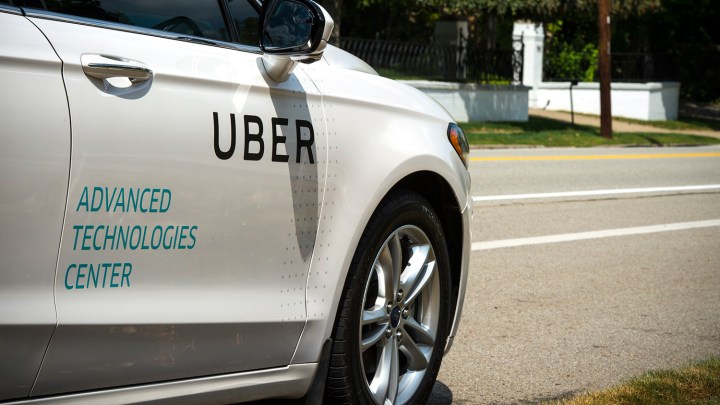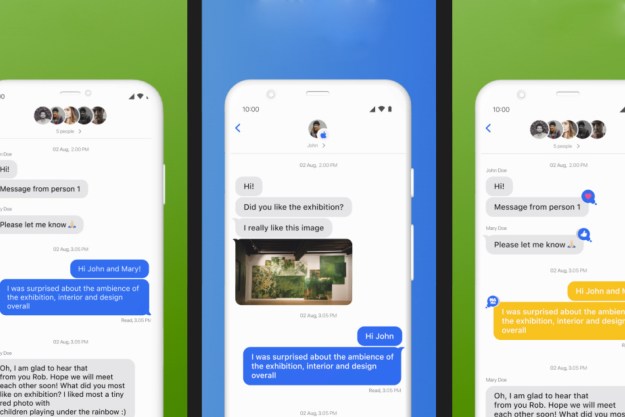
Uber’s long-in-the-tooth app will soon be replaced with a client that is nearly unrecognizable. It is faster and “more stable” on some devices and platforms than the current app, Uber said. But significantly, it represents a shift in Uber’s longtime paradigm. Rather than place ridesharing features front and center, as did the outmoded Uber app, it integrates third-party services in a scrollable window of tiles called the Uber Feed.
If you are familiar with Instagram, Facebook, or Twitter, the Uber Feed will feel familiar. Swipe up from the bottom and you will see contextual content from apps from Uber’s partners: Uber Eats will supply a list of restaurant delivery options, Snapchat will supply custom filters, including a handful that prominently features your ETA, and Yelp will surface the most popular and highly rated nearby dishes.

The integrations do not stop there, of course. Uber already had a deal with Pandora that provided the internet radio’s stations to drivers, but it, along with Spotify, now lives in Uber’s new Feed. The company said it will add new apps and services over time.
The new Uber app’s contextuality extends beyond third-party integrations. It surfaces destination “shortcuts” — places you frequently travel to and travel from — that appear gradually, over time, as it learns your commutes and routines. You might eventually see a shortcut to work, for instance, or home. If you take a train or other form of public transit, it will attempt to align your ride with transit schedules so that you do not experience a layover. It will automatically recommend destinations based on your upcoming appointments. It will also let you request your contacts’ current location to ease pickups and carpooling.
The endgame, in part, is an entertainment portal meant to pass the least appealing element of Uber’s ride-hailing experience: sitting in traffic. The old app offered little more than your destination, charted, or number of miles and minutes you traveled during your route and the number of miles and minutes remaining. The new app, in stark contrast, offers timely, relevant, and ephemeral escapism. “Having a set of experiences and information that are catered to you while you’re in the care can make the trip better and make you more informed about your destination,” Uber chief Travis Kalanickt told Wired.
There is an ulterior motive underlying Uber Feeds, too, and it involves a new window into Uber users’ behaviors: by emphasizing integrated experiences over the standalone apps and clients on riders’ smartphones, the company gains a new, potentially lucrative glimpse into which services command the most attention during rides — and perhaps more importantly, which attract more by location and time of day. There is evidence of such data mining already — Uber’s new app requests access to your calendars, address books, friends’ locations, and more.

It is a strategy somewhat akin to Tencent’s WeChat, a multiplatform messaging app most popular in Asia. The platform has hundreds of millions of users play games, order delivery, chat with friends, and even book flights from a unified, cohesive interface. Tellingly, a number street vendors in China accept payment through WeChat — and some in lieu of cash.
But thankfully, Uber is not opening the proverbial floodgates just yet. It partnered with Yelp, Snapchat, Foursquare, Pandora at launch, with transit integrations set to launch “soon,” but it appears intent on limiting the number of potentially intrusive — and invasive — apps that make up the Uber Feed.
“The question becomes, how frequently do people have the need for this information in this moment?” Jesse James Garrett, founder of user interface firm Adaptive Path, told Wired. “You’re literally on your way to the restaurant. How many people are actually going to feel the compulsion to figure out what they want to order in the car, on the way to the restaurant? And, among the people who do feel that compulsion, how frequently do they feel it?”

Uber Feeds may be the new Uber app’s foremost improvement, but the usability enhancements extend beyond the obvious. The new client splits Uber’s myriad of ridesharing services, which include Uber Pool, UberX, Uber Black, Uber SUV, Uber Assist, and more, into simplified categories such as economy, premium, and extra seats. Tapping on a category reveals a submenu from which you can select a particular vehicle type, see the trip’s estimated fare, get a rough pickup time, and send travel details to friends.
Uber’s fighting to remain relevant in an industry filled with well-funded competitors. The service, which offers ridesharing in 450 cities around the world, faces formidable domestic challenges from Lyft, a San Francisco-based transportation company available in 220 cities and recently attracted a $500 million investment from General Motors. Abroad, the service’s growing list of encroaching competitors includes Indian ridesharing company Ola, which has over 450,000 cars in its network of more than 102 cities, southeast Asia taxi service Grab, which recently raised $680 million, and Didi Chuxing, a Chinese ridesharing service that operates in more than 400 cities and whose list of pedigreed backers includes Apple, Tencent, and Asian retail juggernaut Alibaba.
Ola, Lyft, Grab, and Didi Chuxing announced a partnership in December 2015 to launch a “joint product” by the end of 2016. Earlier this year, Uber sold its Chinese branch, UberChina, to Didi after losing $2 billion in the country.
Uber is hoping to win riders back. “We designed the new Uber app around you — and our core beliefs that time is a luxury and that the information you need should always be at your fingertips,” Yuhki Yamashita, Uber’s senior product manager, wrote in a blog post. “The new Uber experience is reimagined around a simple question — ‘Where to?’ After all, you use Uber to get somewhere — or to someone. And by starting with your destination, we can tailor the journey to you.”
Editors' Recommendations
- Everything you need to know about the massive Apple App Store outage
- The T-Mobile Tuesdays app is about to get a big upgrade
- Google just redesigned one of its biggest apps, and it’s bad
- I review phones for a living — here are the 10 apps I can’t live without
- Guess how much Apple has paid App Store developers — you won’t even be close


